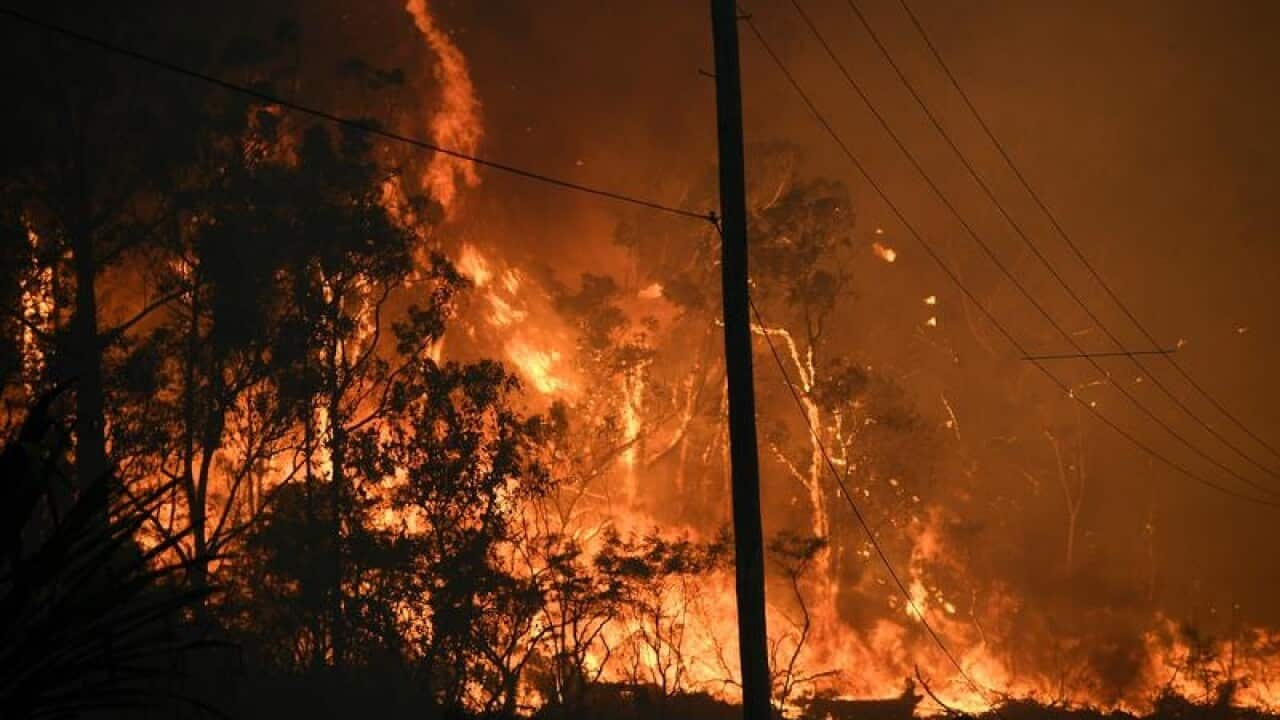Residents across NSW are "living in fear" as bushfires continue to spread across the state with the premier acknowledging it's unusual to have blazes burning from the South Coast all the way to the Queensland border.
Smoke from the fires are drifting "all the way across to New Zealand, being captured and reported on satellites as impacting communities that far away," NSW Rural Fire Service commissioner Shane Fitzsimmons said on Friday. There are currently more than
There are currently more than

NSW Firefighters in action Source: AAP
There are eight fires at emergency warning level, including the huge 250,000-hectare bushfire at Gospers Mountain northwest of Sydney which has joined up with the neighbouring Little L Complex and Paddock Run blazes.
Emergency warnings are also current for the Kerry Ridge fire in the Wollemi National Park, the Carrai East blaze northwest of Kempsey and the Bangala Creek bushfire near Tenterfield.
There are additionally seven major blazes at "watch and act".
Properties may have been lost and damaged on Thursday - particularly at Bawley Point north of Batemans Bay - but exact figures won't be known until assessment teams can safely enter the burned-out areas.
"The difference now as we lead into the summer months is previously they (bushfires) were pretty much confined to the northern part of NSW but what we are seeing this week is our resources stretched across the entire coastline," Premier Gladys Berejiklian told reporters. "We've also seen the fire come into very close proximity to major population centres."
"We've also seen the fire come into very close proximity to major population centres."

NSW Premier Gladys Berejiklian addressing media Source: AAP
Six people have died so far this fire season while almost 700 homes have been lost.
Ms Berejiklian said many families have been forced to leave their homes as thousands of firefighters continue to battle blazes supported by 100 aircraft.
"Our thoughts are with the people who have been displaced and people who are living in fear ... and we have to acknowledge many people throughout the state are," the Liberal leader said.
Crews have come from interstate as well as New Zealand and . A team from the United States will arrive on Saturday.
Mr Fitzsimmons said Friday would be "another extremely busy day" with temperatures reaching into the high 30s in some places coupled with very low humidity.
"We can't overstate the effect that this profound drought is having ... on the flammability of the fuel," he said.
"You are seeing fires start very easily and they are spreading extremely quickly and they are burning ridiculously intensely."
According to the Commissioner, Sydney could remain blanketed in smoke for weeks if not months given it's now surrounded by blazes.
"Unless we are blessed with good, strong, easterly winds - which would push any smoke burning from fires into the west of NSW - we are going to continue experiencing smoke inundation along the coastal strip of this state for some time yet," Mr Fitzsimmons said. Ms Berejiklian has repeatedly said now is not the time to talk about the impact of climate change on bushfires.
Ms Berejiklian has repeatedly said now is not the time to talk about the impact of climate change on bushfires.

View of The Sydney Opera House through smoke haze Source: AAP
But according to a UNSW community survey released on Friday, some 53 per cent of respondents say it is right to talk about global warming during extreme events.
Just 35 per cent of Australians surveyed said it's not OK.
Almost the entire coastal area of NSW and much of the state's northeast is under a severe fire danger rating, while total fire bans are in place for the southern ranges, Illawarra-Shoalhaven, Central Ranges, Greater Sydney, Greater Hunter, Northern Slopes and northwestern regions.
Additional total fire bans have been issued for the Far North Coast, North Coast and New England regions.

